Following the New York stock market crash in October 1929, Canada sank into 10 long years of economic and social despair.
The New York stock market collapsed in the fall of 1929, as stocks lost 39 per cent of their value, or 10 times the U.S. government’s annual budget. The crash unleashed a wave of disaster that would affect the whole world for the next 10 years.
Canada was among the most profoundly affected countries. Goods no longer sold; businesses laid off workers in alarming numbers; family revenues sank; and government aid was insufficient. In the winter of 1933, Canada’s unemployment rate reached around 20 per cent. In spite of it all, people looked for signs of hope, often in the form of political miracles.
“The children complain of hunger and cold. It is impossible for me to adequately provide the things they ask [for]; it is heartbreaking.”
Letter from Arsène Gaudet to Prime Minister R. B. Bennett, February 9, 1934
Making Do
During the Depression, jobs and money were so scarce and needs so great that families had no option but to adapt. New outfits were made from older pieces of clothing. Furniture was built from scrap lumber. Here, a woman in Elginburg, Ontario, made a quilt by stitching together Quaker Oats flour sacks. The result: an attractive “beggar’s quilt” featuring hand-dyed squares.
Reacting to the Crisis
For many, the bleak situation led to desperation. Was there any way out: a light at the end of the tunnel? Solutions seemed to lie in activism and labour unions, and in various proposals for Canadian political reform.
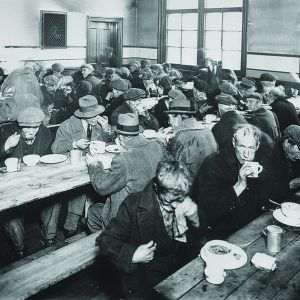 Montréal soup kitchenPhotographer unknown, 1931
Montréal soup kitchenPhotographer unknown, 1931
Library and Archives Canada, a168131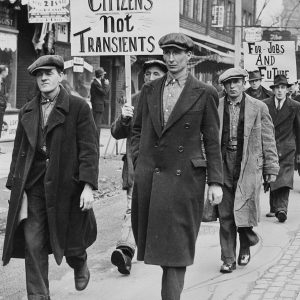 The Single Men’s Unemployed Association parading to Bathurst Street United ChurchLibrary and Archives Canada, C-029397
The Single Men’s Unemployed Association parading to Bathurst Street United ChurchLibrary and Archives Canada, C-029397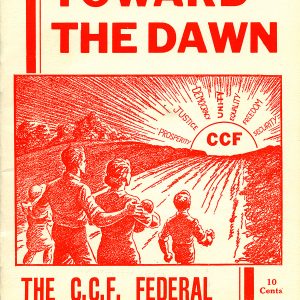 Brochure: Toward the DawnCCF, February 1939
Brochure: Toward the DawnCCF, February 1939
Saskatchewan Archives Board, Political Pamphlets, CCF National Office, 15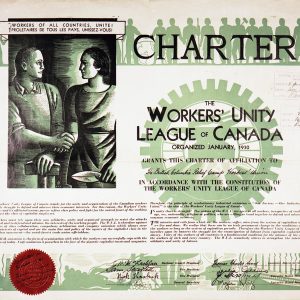 Charter of the Workers’ Unity League1932
Charter of the Workers’ Unity League1932
Saskatchewan Archives Board, R-255.C.8
The On to Ottawa Trek
During the spring of 1935, unemployed British Columbia workers from remote federal government relief camps converged on Vancouver to protest against the camps’ poor conditions. For two months, they were mobilized by the Workers’ Unity League, a communist-inspired union. The league sent 1,000 strikers to Ottawa by train to protest what they saw as the injustices of capitalism. But the On to Ottawa Trek was halted at Regina, when the government forbade the trains to continue. On July 1, local police and the Royal Canadian Mounted Police violently crushed a demonstration. The trek ended in defeat and resentment.
Political Solutions?
The dire economic and social circumstances that Canadians were facing led to repeated calls for political reform. The traditional parties — Liberal and Conservative — recognized the need for change. From the extreme Left to the extreme Right, Canadians sought ways of putting an end to the nightmare of the Great Depression.
A Renewed Conservatism
Holding power in Ottawa and led by Prime Minister R. B. Bennett, the Conservative Party changed direction in 1935. It proposed a New Deal, similar to the one in the United States, which expanded the role of the state in the economy.
Social Catholicism
Condemning the abuses of both capitalism and communism, Catholics around the world sought a third way, encouraged by Pope Pius XI and his 1931 letter Quadragesimo Anno. Social Catholicism was active in French Canada, particularly in the École sociale populaire and political parties like the Action libérale nationale.

Convention of the Action libérale nationale in Sorel, Quebec
Photographer unknown, July 22 or 23, 1938
CMH, Photographic Archives, IMG2015-0380-0001-Dm
Democratic Socialism
In 1933, intellectuals, activists and farmers adopted the Regina Manifesto. It was the basis of a new party: the Co‑operative Commonwealth Federation (CCF). Its first leader, James Shaver Woodsworth, preached the Social Gospel: improvement of the human condition through Christian principles. The CCF would later become the New Democratic Party.
Communism
During the Depression, communist ideology gained popular support, particularly from union members. But the Communist Party of Canada had little success at election time, despite the efforts of Tim Buck, its charismatic leader from 1929 to 1962.
Learn more
Photo at top of page:
Montréal soup kitchen
Photographer unknown, 1931
Library and Archives Canada, a168131
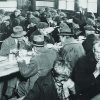

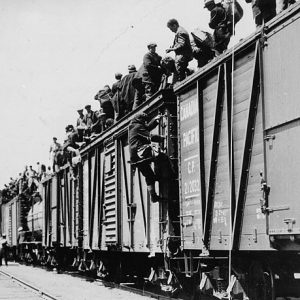
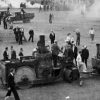 Online Exhibition
Online Exhibition